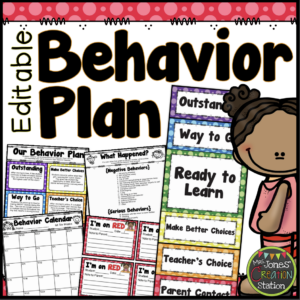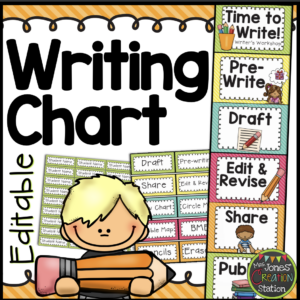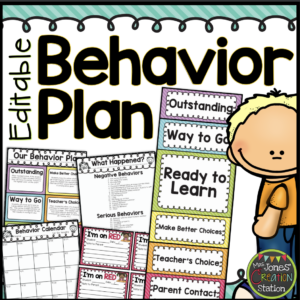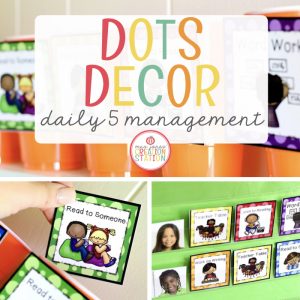SECOND GRADE HOMEWORK MEGA-BUNDLE
UPDATED FOR 2021-2022!
Use these resources to create easy-to-use Homework Packets for your students. Edit the text to meet your learners specific needs! (editing is only available in this bundle)
See how to set up your learners’ homework folder here!
Make homework successful in your classroom with these homework tips!
____________________________________________________________________
This MEGA-BUNDLE includes EDITABLE VERSIONS of…
Second Grade Homework Organization Labels, Notes and Homework Helpers
August Second Grade Homework Packet
September Second Grade Homework Packet
October Second Grade Homework Packet
November Second Grade Homework Packet
December Second Grade Homework Packet
January Second Grade Homework Packet
February Second Grade Homework Packet
March Second Grade Homework Packet
April Second Grade Homework Packet
May Second Grade Homework Packet
**To purchase individual homework packets, click on the links above.
LEARNING STANDARDS INCLUDED IN THIS RESOURCE
Common Core Standards
Language Arts
CCSSL.2.1
Demonstrate command of the conventions of standard English grammar and usage when writing or speaking.
CCSSL.2.1d
Form and use the past tense of frequently occurring irregular verbs (e.g., sat, hid, told).
CCSSL.2.1e
Use adjectives and adverbs, and choose between them depending on what is to be modified.
CCSSL.2.2
Demonstrate command of the conventions of standard English capitalization, punctuation, and spelling when writing.
CCSSL.2.2a
Capitalize holidays, product names, and geographic names.
CCSSRF.2.3
Know and apply grade-level phonics and word analysis skills in decoding words.
CCSSRF.2.3a
Distinguish long and short vowels when reading regularly spelled one-syllable words.
CCSSRF.2.3c
Decode regularly spelled two-syllable words with long vowels.
CCSSRF.2.3f
Recognize and read grade-appropriate irregularly spelled words.
Math
CCSS2.OA.B.2
Fluently add and subtract within 20 using mental strategies. By end of Grade 2, know from memory all sums of two one-digit numbers.
CCSS2.OA.C.4
Use addition to find the total number of objects arranged in rectangular arrays with up to 5 rows and up to 5 columns; write an equation to express the total as a sum of equal addends.
CCSS2.NBT.A.2
Count within 1000; skip-count by 5s, 10s, and 100s.
CCSS2.NBT.A.3
Read and write numbers to 1000 using base-ten numerals, number names, and expanded form.
CCSS2.NBT.A.4
Compare two three-digit numbers based on meanings of the hundreds, tens, and ones digits, using >, =, and < symbols to record the results of comparisons.
CCSS2.G.A.1
Recognize and draw shapes having specified attributes, such as a given number of angles or a given number of equal faces. Identify triangles, quadrilaterals, pentagons, hexagons, and cubes.
Texas Essential of Knowledge and Skills
Language Arts
TEKSLA.2.2.A.i
Developing and sustaining foundational language skills: listening, speaking, reading, writing, and thinking–beginning reading and writing. The student develops word structure knowledge through phonological awareness, print concepts, phonics, and morphology to communicate, decode, and spell. The student is expected to: demonstrate phonological awareness by: producing a series of rhyming words.
TEKSLA.2.2.A.ii
Developing and sustaining foundational language skills: listening, speaking, reading, writing, and thinking–beginning reading and writing. The student develops word structure knowledge through phonological awareness, print concepts, phonics, and morphology to communicate, decode, and spell. The student is expected to: demonstrate phonological awareness by: distinguishing between long and short vowel sounds in one-syllable and multisyllable words.
TEKSLA.2.2.B.i
Developing and sustaining foundational language skills: listening, speaking, reading, writing, and thinking–beginning reading and writing. The student develops word structure knowledge through phonological awareness, print concepts, phonics, and morphology to communicate, decode, and spell. The student is expected to: demonstrate and apply phonetic knowledge by: decoding words with short, long, or variant vowels, trigraphs, and blends.
TEKSLA.2.2.B.ii
Developing and sustaining foundational language skills: listening, speaking, reading, writing, and thinking–beginning reading and writing. The student develops word structure knowledge through phonological awareness, print concepts, phonics, and morphology to communicate, decode, and spell. The student is expected to: demonstrate and apply phonetic knowledge by: decoding words with silent letters such as knife and gnat.
TEKSLA.2.2.B.iv
Developing and sustaining foundational language skills: listening, speaking, reading, writing, and thinking–beginning reading and writing. The student develops word structure knowledge through phonological awareness, print concepts, phonics, and morphology to communicate, decode, and spell. The student is expected to: demonstrate and apply phonetic knowledge by: decoding compound words, contractions, and common abbreviations.
TEKSLA.2.2.B.vi
Developing and sustaining foundational language skills: listening, speaking, reading, writing, and thinking–beginning reading and writing. The student develops word structure knowledge through phonological awareness, print concepts, phonics, and morphology to communicate, decode, and spell. The student is expected to: demonstrate and apply phonetic knowledge by: decoding words with prefixes, including un-, re-, and dis-, and inflectional endings, including -s, -es, -ed, -ing, -er, and -est.
TEKSLA.2.2.C.iii
Developing and sustaining foundational language skills: listening, speaking, reading, writing, and thinking–beginning reading and writing. The student develops word structure knowledge through phonological awareness, print concepts, phonics, and morphology to communicate, decode, and spell. The student is expected to: demonstrate and apply spelling knowledge by: spelling compound words, contractions, and common abbreviations.
TEKSLA.2.7.A
Response skills: listening, speaking, reading, writing, and thinking using multiple texts. The student responds to an increasingly challenging variety of sources that are read, heard, or viewed. The student is expected to: describe personal connections to a variety of sources.
TEKSLA.2.7.D
Response skills: listening, speaking, reading, writing, and thinking using multiple texts. The student responds to an increasingly challenging variety of sources that are read, heard, or viewed. The student is expected to: retell and paraphrase texts in ways that maintain meaning and logical order.
Math
TEKSMA.2.2.A
Number and operations. The student applies mathematical process standards to understand how to represent and compare whole numbers, the relative position and magnitude of whole numbers, and relationships within the numeration system related to place value. The student is expected to: use concrete and pictorial models to compose and decompose numbers up to 1,200 in more than one way as a sum of so many thousands, hundreds, tens, and ones.
TEKSMA.2.2.B
Number and operations. The student applies mathematical process standards to understand how to represent and compare whole numbers, the relative position and magnitude of whole numbers, and relationships within the numeration system related to place value. The student is expected to: use standard, word, and expanded forms to represent numbers up to 1,200.
TEKSMA.2.2.D
Number and operations. The student applies mathematical process standards to understand how to represent and compare whole numbers, the relative position and magnitude of whole numbers, and relationships within the numeration system related to place value. The student is expected to: use place value to compare and order whole numbers up to 1,200 using comparative language, numbers, and symbols (>, <, or =).
TEKSMA.2.2.E
Number and operations. The student applies mathematical process standards to understand how to represent and compare whole numbers, the relative position and magnitude of whole numbers, and relationships within the numeration system related to place value. The student is expected to: locate the position of a given whole number on an open number line.
TEKSMA.2.3.C
Number and operations. The student applies mathematical process standards to recognize and represent fractional units and communicates how they are used to name parts of a whole. The student is expected to: use concrete models to count fractional parts beyond one whole using words and recognize how many parts it takes to equal one whole.
TEKSMA.2.3.D
Number and operations. The student applies mathematical process standards to recognize and represent fractional units and communicates how they are used to name parts of a whole. The student is expected to: identify examples and non-examples of halves, fourths, and eighths.
TEKSMA.2.4.D
Number and operations. The student applies mathematical process standards to develop and use strategies and methods for whole number computations in order to solve addition and subtraction problems with efficiency and accuracy. The student is expected to: generate and solve problem situations for a given mathematical number sentence involving addition and subtraction of whole numbers within 1,000.
TEKSMA.2.5.A
Number and operations. The student applies mathematical process standards to determine the value of coins in order to solve monetary transactions. The student is expected to: determine the value of a collection of coins up to one dollar.
TEKSMA.2.6.B
Number and operations. The student applies mathematical process standards to connect repeated addition and subtraction to multiplication and division situations that involve equal groupings and shares. The student is expected to: model, create, and describe contextual division situations in which a set of concrete objects is separated into equivalent sets.
CONNECT WITH MJCS
© Mrs. Jones’ Creation Station, Inc.




